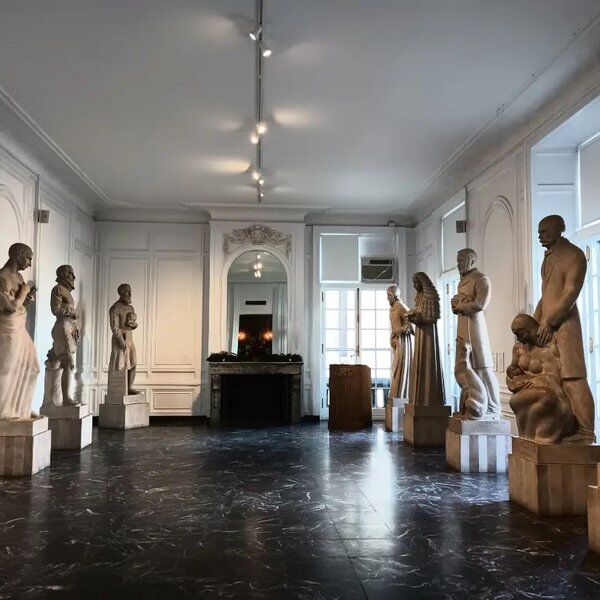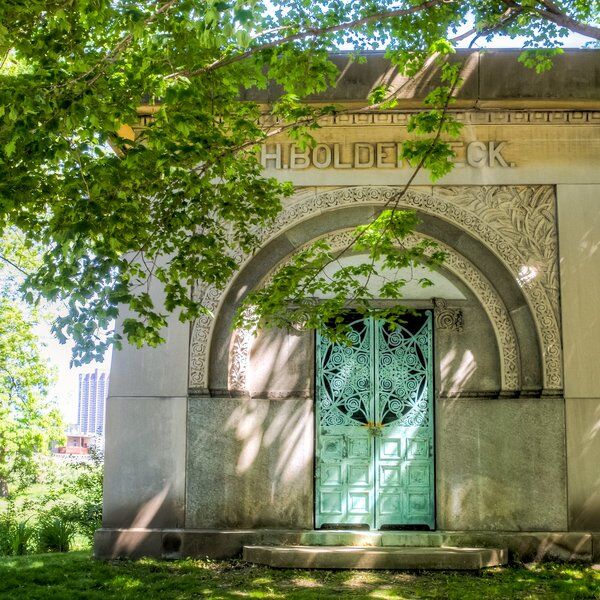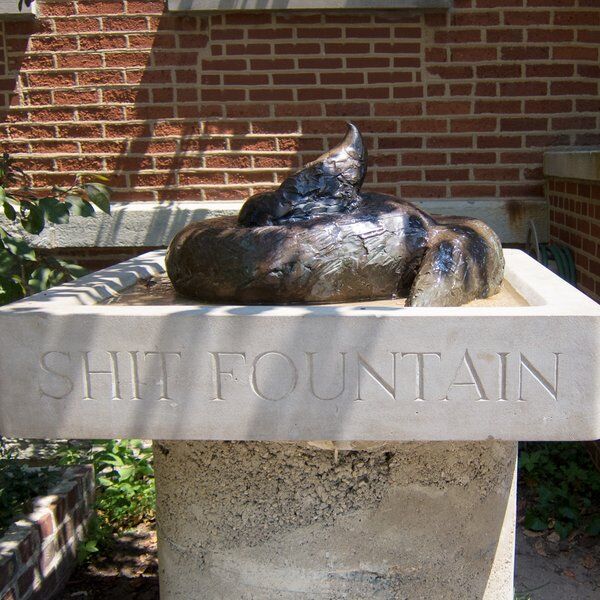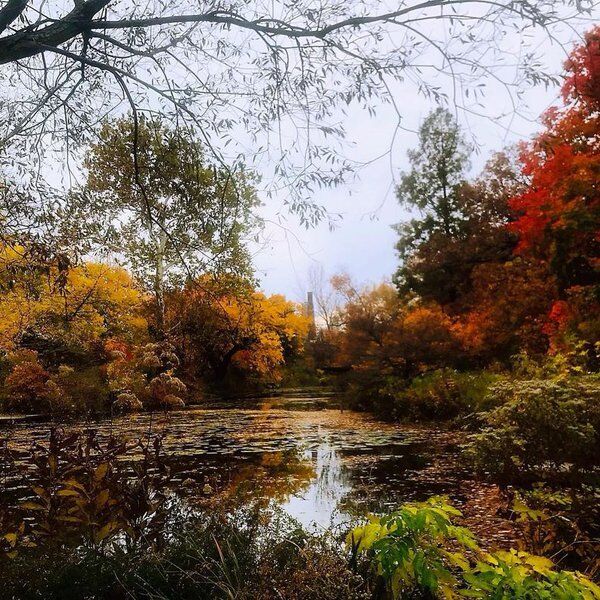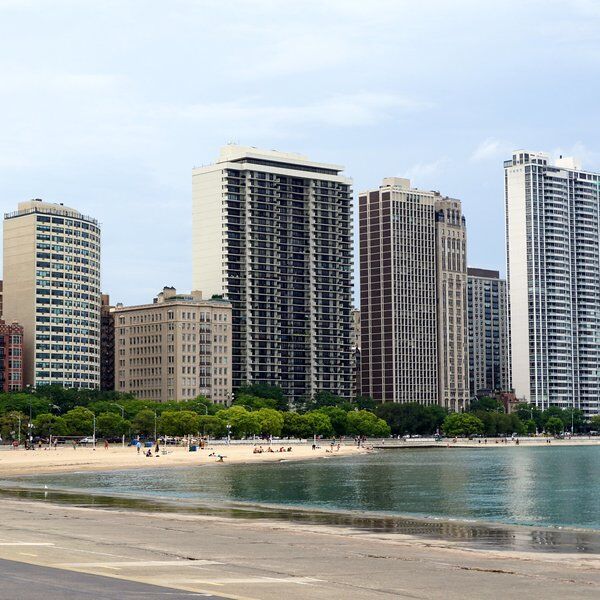
Discover the Baha'i Temple in Chicago
“…. a haven for the deepest contemplation on spiritual reality and foundational questions of life.”
The Baha'i Temple, officially known as the Baha'i House of Worship, rises 190 feet over Wilmette Harbor, in a northern suburb of Chicago. Casting an iconic shadow, the temple is intricately decorated with what looks like shimmering lace and crowned with a white-domed roof. Despite this seemingly delicate exterior material, the temple is actually made from concrete infused with crushed quartz, which causes the shimmering effect.
The temple has nine sides, nine doors, and nine gardens, with the number nine symbolising unity, perfection, and completion, as the highest single digit in the Baha'i faith. Inside, the temple’s interior design has religious architecture and symbols from different faiths, including Judaism, Christianity, Islam, Buddhism, and Hinduism. This represents the Baha'i belief in the oneness of humanity.
Recognised as a National Historic Landmark in 1978, and one of the Seven Wonders of Illinois, the temple attracts approximately 250,000 visitors annually. Known as the "Temple of Light and Unity" and the "Mother Temple of the West," it exists not only as the second Baha'i temple ever constructed but also the oldest still standing.
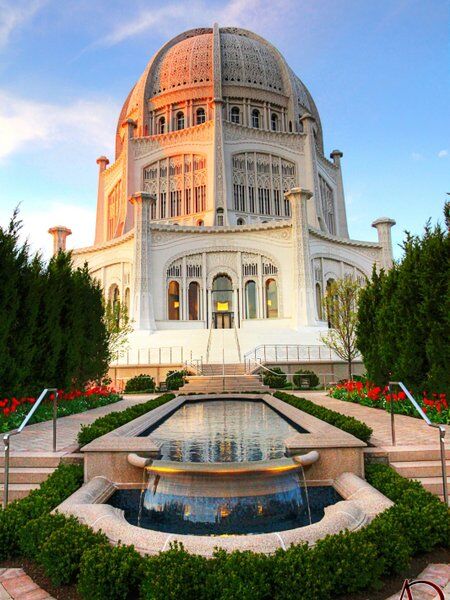
What is the Baha’i Faith?
Baha’is believe that the purpose of life is to know and worship God and to acquire virtues. They practise daily prayer and communion with God, actively serve humanity, and foster friendship with followers of all religions, believing that all people were created by one God and are part of a single human race. They have high moral standards, including trustworthiness, chastity, and honesty, and avoid materialism, partisan politics, backbiting, alcohol, drugs, and gambling. With no clergy, each Baha’i is responsible for independently investigating the truth.
Socially, the Baha’i Faith promotes the equality of women and men, the elimination of prejudice, spiritual solutions to economic problems, and the abolition of extremes of poverty and wealth. It advocates for a world commonwealth of nations, recognising the common origin and unity of all religions, and supports the idea that science and religion complement each other. Additionally, the Baha’i Faith calls for a global language, universal script, currency, and system of weights and measures.

What are the Origins of the Baha’i Faith?
The Baha’i Faith was founded in the mid-1800s in present-day Iran by Bahá’u’lláh, a Persian prophet. He preached the oneness of all world religions, the equality of races, and the promise of global peace. This faith was first introduced to the United States at the Parliament of the World's Religions of 1893. Despite its relatively small size, with five to seven million followers worldwide, the Baha’i Faith has established a few distinctive temples, the largest and oldest of these is the Baha’i House of Worship near Chicago, Illinois, known as the “Mother Temple of the West.”
Creating the Baha’i Temple
The idea to construct the Wilmette temple originated with a group of Chicago Baha’is in 1903. Following a pilgrimage by Chicagoan Corinne Knight True, the religious leader `Abdu’l-Bahá’ blessed the project and advised its location near Lake Michigan. In 1907 two lots were purchased along Lake Michigan, in what is now Wilmette, but it took nearly five decades for the vision to become a reality.
Challenges to the Temple’s Creation
Construction began in the 1920s with the completion of the Foundation Hall by 1922. However, progress was slow and riddled with delays. Setbacks were caused by both World Wars and the Great Depression, during which fundraising for the construction of the temple was limited, although these efforts did persist. To help the construction, contributions were made by Baha'is worldwide, including donations like a piece of limestone from Chicago resident Nettie Tobin, and so eventually the Baha'i House of Worship was completed in 1953.
Opening the Baha’i Temple to the Public
The dedication ceremony on 2nd May 1953, drew over 3,500 attendees, including Corinne True. Rúhíyyih Khánum, wife of Shoghi Effendi (successor to ʻAbdu'l-Bahá), delivered a prayer at the dedication, which was also celebrated by figures like Supreme Court Justice William O. Douglas and future Justice Thurgood Marshall.

Architecture of the Baha'i Temple in Wilmette
The Exterior
Each Baha’i house of worship shares a common architectural theme: a nine-sided structure crowned with a majestic dome and surrounded by gardens. This design embodies the faith’s belief in the unity of all people and religions. The Baha’i Temple in Chicago, was designed according to this theme by French-Canadian architect Louis Bourgeois, who included different religious symbols on each of the nine pillars, including the Star of David and Christian crosses.

"We visualise the merging of all religions into one."
Bourgeois used various elements from different styles of architecture to further incorporate the idea of oneness into the temple. He used neoclassical symmetry, Gothic ribbing, Renaissance domes, Romanesque clerestories, and Islamic arabesque traceries. These intricate details required strong materials. Initially considering limestone, granite, terra cotta, and aluminium, the architects settled on concrete despite criticism. It was then John Earley, a skilled craftsman, who gave the concrete a visual warmth.
The Interior
In the interior of the domed Baha’i Temple, there is an Arabic inscription of the Baha'i "Greatest Name," Bahá’u'lláh as the supreme Manifestation of God. But sacred writings from all religions are also chanted, spoken, and sung inside, creating an environment for all visitors to worship there.

The Nine Gardens of the Baha’i Temple
Designed by landscape architect Hilbert Dahl, the temple gardens were initially dominated by evergreen plants, reflecting the popular post-World War II aesthetic. Over the years their appearance changed but recent restoration efforts focus on returning the gardens to their original design.
Carol Yetken, a landscape architect involved in the restoration, emphasised the importance of respecting Dahl's original plans. Situated near Lake Michigan, the gardens experience varying winds and moisture levels, affecting plant growth and health. Dahl's designs accounted for these factors, influencing his choice of plant species.
By studying Dahl's drawings and plant lists preserved in the Baha'i Archives, the restoration team aimed to recreate the gardens authentically. Adjustments included replacing overgrown plant species with slower-growing alternatives like boxwood to maintain scale and balance within the garden's layout.

Visiting the Baha'i Temple in Wilmette: A Guide for Visitors
Visitor Guidelines
When visiting the Baha'i House of Worship in Wilmette, several guidelines ensure respect.
- Visitors are required to wear shoes.
- Modest dress, and shirts are recommended.
- Only guide dogs and other service animals are permitted on the grounds.
- Bicycles should be secured to the racks provided.
- Photography guidelines stipulate that group photography requires prior permission, while fashion, modelling, or commercial photography is not allowed.
- Photography inside the Auditorium is strictly prohibited.
Welcome Center
From 1958 to 2001, the temple was a home for the elderly, run by the U.S. Baha'i community. Today, helped by the addition of a welcome centre in 2015, the temple continues to provide support for the community. There are local and regional Baha'i activities, including educational programs and spiritual gatherings.
The welcome centre is located adjacent to the Temple on Linden Avenue. Here, worshippers can explore the history of the Temple and the Bahá’í faith, watch a short film, visit the bookshop, and connect with volunteer guides and staff. The Fireside Room within the visitor centre provides a tranquil space for relaxation or spiritual conversations prior to worship.
Services and Events
The Baha'i Temple hosts regular services open to the public from Wednesday through Sunday at 12:30 pm and 6:00 pm. On Sundays from 12:30 pm to 1:00 pm, there is a Devotional Service with music from the Temple Choir. Study Circles, Special Worship Services and observances for Baha'i Holy Days are also held in the Temple.
Everyone is welcome to attend these events and services. Children are encouraged to join special age-appropriate Children's Classes, while Junior Youth Spiritual Empowerment Groups are targeted at pre-teens and early teens.

Interested in finding more places like this? Try one of our Chicago Scavenger Hunts - untangle cryptic clues as a team, as you are taken on a journey to the most unique, unusual and bizarre corners of Chicago and beyond!








